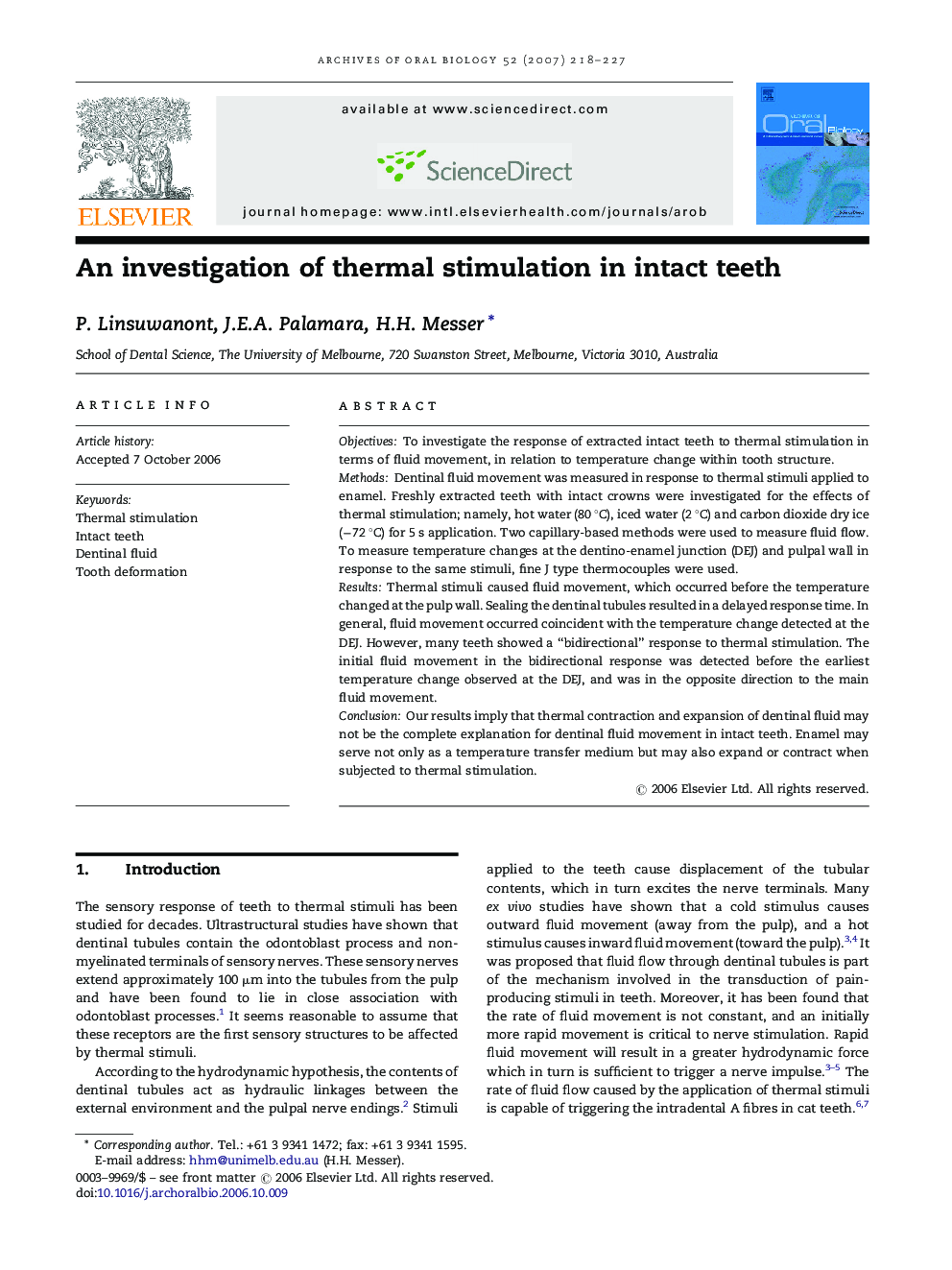| Article ID | Journal | Published Year | Pages | File Type |
|---|---|---|---|---|
| 3121284 | Archives of Oral Biology | 2007 | 10 Pages |
ObjectivesTo investigate the response of extracted intact teeth to thermal stimulation in terms of fluid movement, in relation to temperature change within tooth structure.MethodsDentinal fluid movement was measured in response to thermal stimuli applied to enamel. Freshly extracted teeth with intact crowns were investigated for the effects of thermal stimulation; namely, hot water (80 °C), iced water (2 °C) and carbon dioxide dry ice (−72 °C) for 5 s application. Two capillary-based methods were used to measure fluid flow. To measure temperature changes at the dentino-enamel junction (DEJ) and pulpal wall in response to the same stimuli, fine J type thermocouples were used.ResultsThermal stimuli caused fluid movement, which occurred before the temperature changed at the pulp wall. Sealing the dentinal tubules resulted in a delayed response time. In general, fluid movement occurred coincident with the temperature change detected at the DEJ. However, many teeth showed a “bidirectional” response to thermal stimulation. The initial fluid movement in the bidirectional response was detected before the earliest temperature change observed at the DEJ, and was in the opposite direction to the main fluid movement.ConclusionOur results imply that thermal contraction and expansion of dentinal fluid may not be the complete explanation for dentinal fluid movement in intact teeth. Enamel may serve not only as a temperature transfer medium but may also expand or contract when subjected to thermal stimulation.
